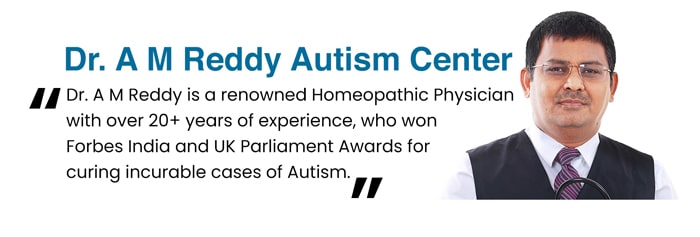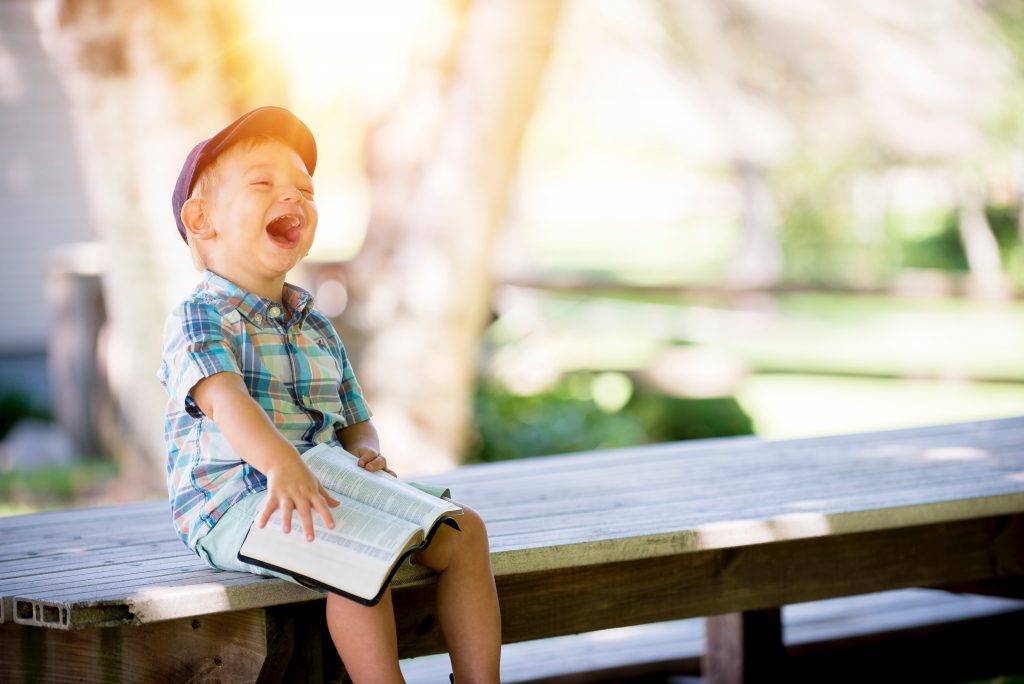Book An Appointment
ASD
What is Autism or Autism spectrum disorders (ASD)?
 Autism is a neurological developmental and behavioral disorder impacting communication and social interaction skills. Many show very restricted interest bordering on obsession and repetitive behavior known as stereotype behavior. The most visible signs of Autism spectrum disorder (ASD) tend to appear between the ages of 2 to 3 years though in some cases, it can be diagnosed as early as 18 months. However, the timing and severity of autism’s first symptoms vary widely.
Autism is a neurological developmental and behavioral disorder impacting communication and social interaction skills. Many show very restricted interest bordering on obsession and repetitive behavior known as stereotype behavior. The most visible signs of Autism spectrum disorder (ASD) tend to appear between the ages of 2 to 3 years though in some cases, it can be diagnosed as early as 18 months. However, the timing and severity of autism’s first symptoms vary widely.
The symptoms range from mild to severe and have now been grouped under “Autism Spectrum Disorder (ASD)” by DSM-5. The word “spectrum” has been added to denote the wide gamut of symptoms it encompasses.
Autism Spectrum Disorder along with Asperger’s syndrome, Childhood Disintegration disorder, Pervasive Developmental Delay (not otherwise specified) are commonly known as Pervasive Developmental Disorder and Rett’s syndrome.
What are the causes for Autism?
Though the exact cause for autism is not known certain factors are suspected to play a role which include
- Genetics
- Environmental factors like exposure to heavy metals
- Exposure to certain viruses in pre-natal and post-natal life like Rubella and other TORCH infections
- Vaccinations like MMR
- Hypoxic (low Oxygen) condition during birth
- Premature delivery or Low birth weight
- Age of the parents during conception
- Mother’s health during pregnancy.
What are the Signs of Autism?
The signs and symptoms of autism vary from individual to individual and may differ in their intensity and occurrence. However, some red flags which if present may support the suspension that the child is autistic. A typical Autism spectrum disorder (ASD) child appears to be shy and introverted in nature.
- They do not make eye contact while interacting.
- They may not respond to their name in spite of intact hearing.
- They find it difficult to relate to their peer group and interact to make friends easily.
- They cannot play in a group and remain alone.
- They have marked impairment in facial expressions.
- They may have difficulty understanding emotions and what others want and appear to lack empathy.
- They usually have an unusual and intense reaction like head banging, lip biting, etc. for the slightest change in their routine.
Communication – Speech and communication difficulties are one of the most important signs of ASD.
- In many, speech may not develop or have a speech delay.
- Forgetting words or phrases which were familiar to them earlier.
- Mostly use non-verbal (gestures and signs) to communicate.
- Repeating words/phrases over and over again.
- Those who can speak usually speak in a flat monotonous voice.
- Their vocabulary is quite limited.
Repetitive behavior – Another important sign of autism is repetitive or stereotypical behavior known as Stimming.
- Repetitive movements like flapping, wringing of hands, rocking, etc.
- Playing the same game or with the same toy over and over again.
- Even in food, prefers only a particular taste or color and does not appreciate any change.
What is the classification of Autism spectrum disorder (ASD)?
As per DSM-V Autism spectrum disorder (ASD) or Pervasive Developmental disorder encompasses:
Asperger’s Syndrome – It is a milder form of autism and was first described by a pediatrician Dr. Hans Asperger in 1944. In this condition, speech development is usually normal and the child may have normal intelligence but
- Have problems with social skills and find it difficult to interact with others.
- Cannot make friends easily and may remain aloof.
- They may avoid making eye contact or may gaze intently when speaking with someone.
- They usually have very restricted or repetitive behavior like jumping, rocking, etc.
- They may have difficulty in understanding body language and appear to lack empathy.
- They cannot understand the language in its context and may take a joke or sarcasm literally.
- They have a very limited range of interests and may develop obsessive interest on few selected topics like sports statistics, whether or maps.
- Their cognitive movements may seem clumsy or awkward.
Childhood disintegration disorder – It is also known as Heller’s syndrome. It is a relatively rare disorder where the child may exhibit normal development until he is 2 to 3 years and then gradually loses his language, social and motor skills before the age of ten. Initially few behavioral changes can be noticed like
- Unreasonable Anxiety.
- Unprovoked anger bordering on violent actions.
- Withdrawal from society.
- May lose control over their bladder/bowels.
- Children may stop talking or use only single words instead of sentences.
- Perform repetitive actions.
- They lose their cognitive and motor skills.
Pervasive Developmental Delay (not otherwise specified) also known as Atypical Autism. It is when an individual displays autistic behavior and poor interactive skills but may not meet the complete criteria of Autism are labeled under this group and is also known as sub-threshold autism or atypical autism. There is no set pattern of symptoms but many children exhibit symptoms like –
- Cannot interact easily and may be labeled as an introvert.
- Prefers to be alone.
- Does not make eye contact.
- Has difficulty playing in a group or sharing things
- Cannot differentiate between familiar and unfamiliar people.
- Lacks social empathy.
- They may exhibit “Echolalia” i.e. repeating phrases or words again and again.
- Lack of understanding or comprehending.
- They may be resistant to any change in routine.
Rett Syndrome – is a brain disorder affecting mostly girls by six months of age and is relatively rare. It is characterized by-
- Poor or stunted growth.
- Small head (microcephaly)
- They lose the ability to use their hands.
- Do not develop language skill.
- They may exhibit social anxiety and shun company.
- They have poor motor coordination.
- Usually associated with seizures.
Diagnosis- There are no single diagnostic tests for autism. It is based on analysis and assessment of a child’s behavior pattern and development by trained doctors or psychologists. If a child shows signs suspected of Autism then the child is assessed on various scales of Autism like Autism Diagnostic Interview-Revised (ADI-R) and the Autism Diagnostic Observation Schedule (ADOS). Various questionnaires are devised to ascertain the child’s social, communicative and cognitive skills. Generally, many parents ignore early signs of autistic behavior as general mood swings, or delayed milestones and approach the doctor much later. Early evaluation and diagnosis help to normalize the child and prognosis are much better compared to late diagnosis.
Treatment- Unfortunately there is no treatment for autism in conventional methods. It can be controlled by counseling, behavioral corrections, a good diet, and vitamin supplements. Medicines are given to associated symptoms like sleep disturbances, seizures, etc.








